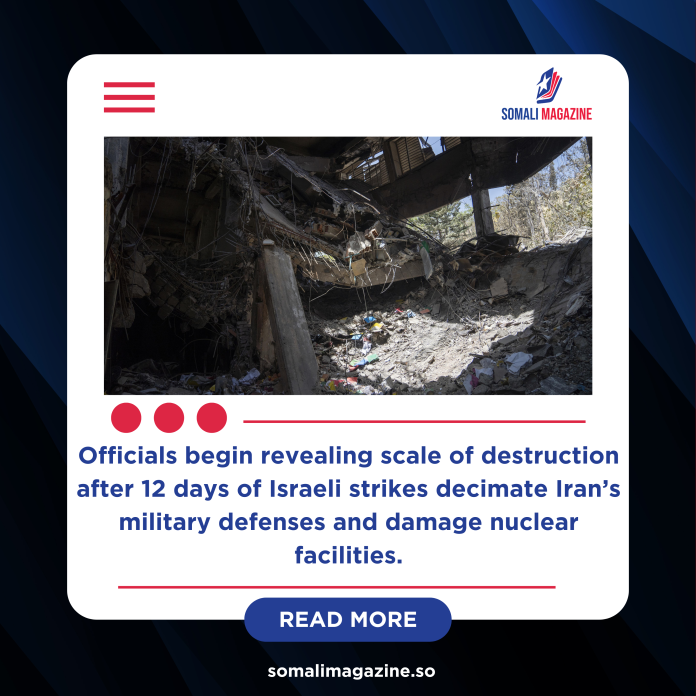Facebook Twitter (X) Instagram Somali Magazine - People's Magazine
Iran has officially raised its death toll from the recent war with Israel, saying at least 1,060 people were killed. The announcement was made by Saeed Ohadi, head of Iran’s Foundation of Martyrs and Veterans Affairs, during an interview on state television late Monday. Ohadi also warned that the number of dead could rise to around 1,100, as many of the wounded are in critical condition.
This updated figure marks a significant increase from earlier estimates, as Iran has been cautious about sharing the full impact of the 12-day conflict. Throughout the war, the Iranian government tried to downplay the damage caused by Israel’s attacks, especially to its military infrastructure. However, now that a ceasefire is in place, more details are beginning to emerge.
Widespread Destruction
During the war, Israel carried out a series of airstrikes that seriously damaged Iran’s military capabilities. Reports indicate that the bombardment heavily weakened Iran’s air defense systems, destroyed several key military sites, and inflicted serious damage on parts of its nuclear facilities. Despite these losses, Iranian officials have remained silent about the exact scale of the damage to military equipment and weaponry.
Only after the ceasefire was declared did the government begin to acknowledge the extent of destruction. Still, details have been released slowly and cautiously. Officials have not provided a full breakdown of military losses or detailed assessments of infrastructure damage.
Civilian and Military Losses
In addition to the government’s numbers, the Human Rights Activists group based in Washington, D.C., has also released its own casualty report. The group stated that 1,190 people were killed in the conflict, a number slightly higher than the official Iranian figure. According to their report, the dead include 436 civilians and 435 members of the security forces.
The group also reported that at least 4,475 people were injured during the fighting. These casualties include both civilians and military personnel. Many of the injured reportedly suffered serious wounds and are still undergoing treatment in hospitals across the country.
This war marks one of the most intense and damaging episodes in Iran’s recent history. For the first time in decades, Iran experienced direct and sustained attacks from a foreign military power that managed to target critical infrastructure deep within its borders.
Public Reaction and Government Response
Inside Iran, the public has been left with a mixture of grief, anger, and confusion. Many families are mourning the loss of loved ones, while others are waiting anxiously for news about those injured or missing. The Iranian government has been working to provide support for families affected by the war through the Foundation of Martyrs and Veterans Affairs, which has long offered aid to families of those killed in war or national service.
Saeed Ohadi, in his televised comments, praised the resilience of the Iranian people and the sacrifices made by those who died. He also promised that the government would honor them and offer continued support to their families.
Still, there are growing concerns about how the country will recover from the losses and damage. The destruction of air defense systems and damage to nuclear facilities could affect Iran’s long-term military and energy plans. At the same time, the country’s economy—already strained by sanctions and inflation—is now facing additional pressure to fund reconstruction and medical care for the wounded.
As Iran continues to assess the full damage and casualty numbers, the final death toll may still rise. For now, the human cost of the war is becoming clearer—and for many Iranians, the road to healing is just beginning.

